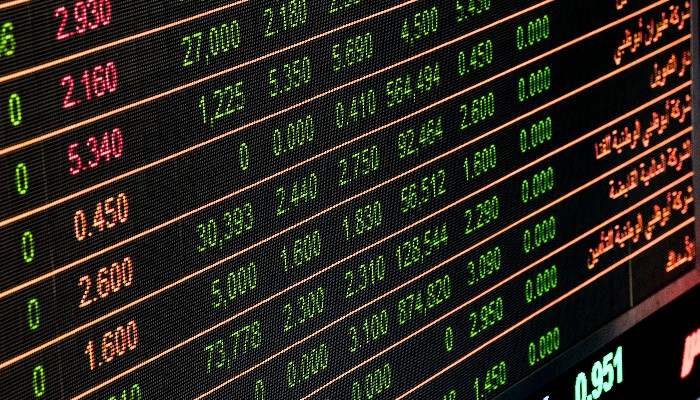This article primarily highlights the difference between primary market and secondary market.
A financial market is a market where people do trading of financial securities and derivatives at low transaction costs. Some of the securities that are traded include stocks and bonds, raw materials, precious metals etc. These are commonly known as commodities in the financial markets. The capital market can further be divided into two types- Primary Market and Secondary Market.
Knowing how the primary and secondary markets work is key to understanding the difference between primary market and secondary market. Without them, the capital markets would be difficult to steer through and much less profitable. But before we move onto the difference between primary market and secondary market, what do they refer to?
A primary market is a market where new securities are bought and sold. A secondary market, on the other hand, is a market where previously issued financial instruments are bought and sold.
Difference between primary market and secondary market
1.On the basis of role of the markets
New securities are dealt with in a primary market. This means that the firms sell (float) new stocks and bonds to the public for the first time. An initial public offering or shortly called IPO is a perfect example of a primary market. An IPO is the process by which a private company goes public by sale of its new stocks to the public.
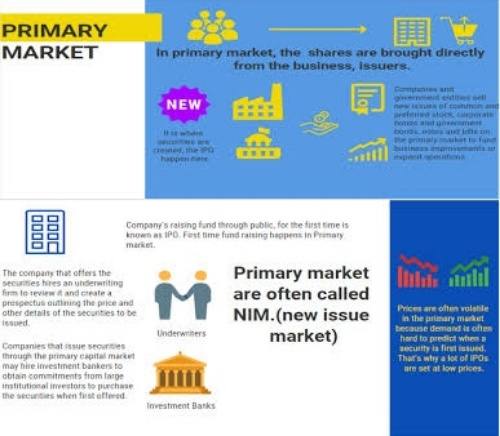
A primary market is a market where new securities are bought and sold.
The most important fact about primary market is that in such market the securities are purchased directly by the public from the issuer.
On the contrary, a defining characteristic of the secondary market is that investors trade among themselves in this market. This means that the investors trade previously issued securities here without any involvement of the issuing companies’. For example, if anyone goes to buy stock of Amazon, they will deal only with another investor who owns those shares in Amazon. There will be no direct involvement of Amazon in the transaction.
Thus, the role of the two markets play an important part in creating a way for difference between primary market and secondary market.
Related: Marginal efficiency of investments
2. On the basis of intermediaries involved
Intermediaries serve as an important link between the regulators, issuer and investors. SEBI has issued rules and regulations in respect of each intermediary involved in rendering services to the investors in the markets. Thus the type of intermediary involved paves way for difference between primary market and secondary market.
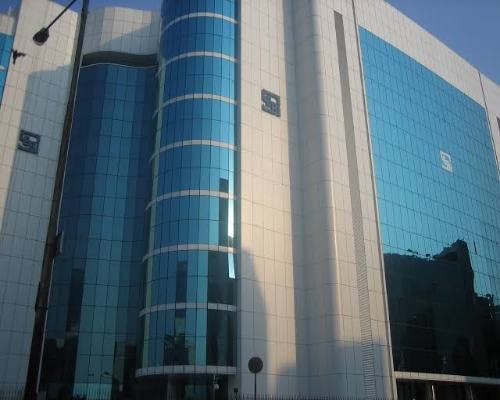
The market intermediaries are involved in the primary market mainly include: merchant bankers or the lead managers, registrars and share transfer agents, underwriters, bankers to the issue and debenture trustees. On the other hand, brokers and sub brokers are mainly involved as intermediaries in the secondary market.
3. On the basis of other name
Regarding financial markets, the primary market is also often known as the New Issue Market or NIM in short since it is the market where the issuing of new securities takes place. During the initial stages of public offering, a company sells its shares directly to an investor through the primary market. The investor can then resell their shares further in the secondary market, for example in stock exchange.
The secondary market is also known as After Issue Market as the securities previously issued are sold or transferred by one investor to another in this. It is therefore necessary that the secondary market must be highly liquid in nature. As a general rule, the more the number of investors that participate in the secondary market and the more the centralization of that market is, the liquidity of the market will be higher.
Thus, this is another point of difference between primary market and secondary market.
4. On the basis of price of issued securities
For a transaction taking place in a primary market, there are three entities involved- a company, investors and an underwriter. A company issues the securities in the market as an initial public offering (IPO) and the sale price of newly issued securities is decided by the concerned underwriter (which may or may not be a financial institution). Thus, the securities which are dealt with in the primary market have a fixed price.
This forms another point of difference between primary market and secondary market. To be more explicit, the prices of the securities in the secondary market are determined by the combined forces of demand and supply.
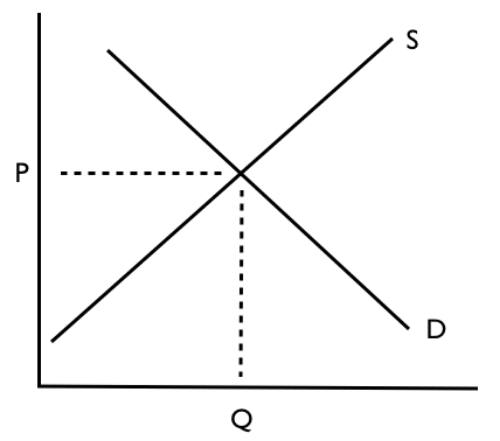
If the majority of investors believe a stock will increase in value and rush to buy it, the price of the stock concerned will rise then due to increase in its demand. If a company fails to post sufficient earnings of its stock, their price is likely to decrease then as demand for that security will eventually fall off.
5. On other basis
Other key difference between primary market and secondary market includes:
- A security can be sold for only one time in a primary market whereas it can be sold an infinite number of times in a secondary market.
- The amount received from the securities form part of income of the company in case of a primary market but in the secondary market, it is the income of investors.
- A primary market is rooted deep in a specific spot and has no geographical existence as it has no organizational setup. On the other hand, a secondary market has physical presence in the form of stock exchange, which is situated in a particular geographical area.
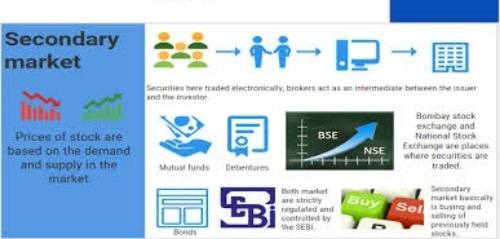
Conclusion
Although you may not understand about all the activities that take place in markets but it is always good to have a general understanding of the markets and their structure. The way in which the securities are bought and sold in the market is central to its function. Just imagine if organized markets did not exist; the companies would have to personally track down investors and you’d have to track other investors just to buy or sell a stock, which would have been quite a difficult task.
In fact, numerous investment scams would have revolved around securities that had no market, because clueless investors might be cheated into buying them. The importance of markets and their ability to sell a security and provide liquidity is regularly underestimated but without them, the investors and companies will end up stuck with big losses. Hence, a little knowledge with regard to the markets, their working and the difference between primary market and secondary market won’t harm, and might just save you a lot of money in the long run.
